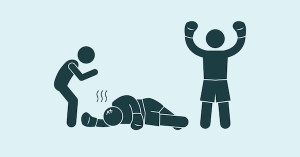The simplest way to say it is that signals are important. They often speak much more than the actual language. And search engine optimization (SEO) is a Google signal. Therefore, this makes it essential to learn that at least one of all e-commerce websites sends the right website allowing owners to reach their target audience without paying for ads. This typically includes optimizations such as headings, product descriptions, metadata, and internal link structures. Ideally, each product should have its page designed to attract search engine traffic. When people visit the site, the content of the site guarantees their stay. But first, you need to create this possibility.

Here are some of the best practices for e-commerce SEO:
Use Correct Keywords:
Keywords are as important as salt in the dish. And you need to include it evenly and evenly so that it matters. Do not crowd product titles and descriptions with keywords. Add as needed.
Mentions key keywords in product headings, descriptions, alternative attributes, and subheadings. Add keywords related to your primary keywords to help Google better understand the pages in your context. Take hours to understand your search values as well. This shows the interest that certain keywords bring to consumers. High search volume indicates high popularity. This means that your website is searching for that keyword more aggressively.
Keep an eye on your intent as it explains what you want to find when you type a particular keyword in Google’s search bar. It then tracks the progress of all these actions.
Moreover, SEO isn’t just about keywords. There are also technical pages that cover website speed, ease of use, mobile-friendliness, work links, and more. SEO auditing tools like RankWatch can help you perform e-commerce SEO audits and improve your technical SEO.
Data on Backlinks
Go to backlink analyzers to see what backlinks you are receiving from other websites. This can assist you in determining who is already a fan and which related sites you can target for additional link building.
Rank Monitoring
With rank tracking platforms, you can see how you rank in organic search engine results pages for your target keywords. You’ll be able to see how much you’ve gotten better over time this way.
Perform a competitor survey:
Select competitors. Competitors mean they are ahead of the game, already researching and doing the legwork for better rankings. Read and analyze their work as it will help you work on the site.
Analyze the use of keywords, especially on homepages and top product pages, and search for possible keywords on categories and product pages. However, do not blindly use keywords alone.
Site Architecture:
For the best e-commerce SEO, the site architecture or structure is a way to set up navigation, category pages, and product pages for your website. The basic idea is to make the best and most relevant content available to your users and reduce the number of clicks to find it.
Make pages simple and scalable. In particular, your site needs a clear navigation hierarchy, from your home page to your product categories to the products listed. As a rule of thumb for search engines and visitors, people can go anywhere with three clicks.
Correct navigation and internal links must also be guaranteed. Search engine bots detect pages and products on your website based on a well-defined internal link structure. This structure is easy to follow to increase your chances of being ranked high in your search.
Product Image Optimization:
Customers are more likely to purchase products that present their products from as many angles as possible than from websites without images. Therefore, the image is a very important part of the product page. Use unique images that are qualitative and compelling. The
images have excellent SEO. Add a keyword to the name of the image on the page and always enter alt text. This is a line of “alternative” text that you can display with your image and is another way to get important keywords on your website. When a search engine crawls a website, it has no way of knowing what the image is. However, alt text can provide context to search engines.
URL optimization:
URL optimization usually skips the beginning or may seem unnecessary to the owner. But that’s an important part of SEO to the eye. Optimized URLs help search engine bots find and crawl websites and find out what they are.
It’s easy to put the main keywords in the URL to make it easier to read and understand, which will improve your search ranking. The correct URL structure also facilitates website indexing.
In addition, URLs can improve the user experience, and a good user experience will keep your site’s audience longer. It offers additional opportunities to turn them into customers.
Allow Customer Ratings:
A rating creates credible trust among buyers and strengthens customer credibility. When they read the reviews, they feel like another customer has selected the product as they did and shared their unfiltered experience.
Helps increase conversions on product pages. It also helps you practice SEO by unknowingly using synonyms and long-tail keywords that help you rank your site.
Avoid Duplicate Content:
Nobody likes copying. Be original, clear, and unique for all content on your website. In most cases, it is the product description that is copied or easily tampered with, as provided by the manufacturers that sell on many websites.
However, due to changes in search engine algorithms, more websites are being punished for copying copies of their products. Therefore, try creating a new and unique description for each item on your website.
Aim for 35 concise sentences that describe the item and try to use the appropriate keywords or phrases to rank the item. Add canonical tags or 301 redirects to your pages to ensure that search engines know which pages may contain the same or similar content.
Conclusion:
As online competition intensifies and the number of online stores grows day by day, owners need to incorporate e-commerce SEO into their content to stay on top.
Digital & Social Articles on Business 2 Community
(43)
Report Post




